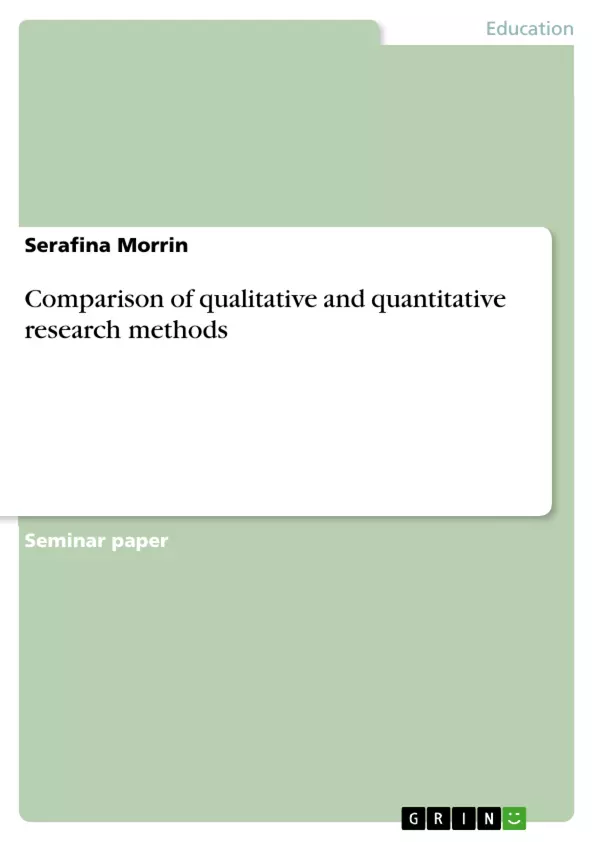In order to understand the separation of qualitative and quantitative research, it is worth taking a look at the process of the emergence of empirical pedagogical research. Viewing education as a science in which philosophy and pedagogy intertwine has its origins in the century of pedagogy. The humanistic idea of pedagogy was then predominant until the Second World War.
There was a clear separation between the humanities and the natural sciences. For Wilhelm Dilthey, natural science, as not interpretative but seeking universally valid laws that can be proven by measurements, was on one side. The humanities, on the other hand, wanted to understand historical objects. It looked at them in a complex context and tried to understand historical change.
Inhaltsverzeichnis (Table of Contents)
- Historical background
- Characteristics of qualitative and quantitative research
- Quantitative research
- Qualitative research
- Comparison of qualitative and quantitative methods
Zielsetzung und Themenschwerpunkte (Objectives and Key Themes)
This text delves into the historical development of qualitative and quantitative research in the field of empirical pedagogy, exploring their distinct approaches and the ongoing debate about their relationship.
- The historical evolution of research methods in pedagogy, particularly the separation between humanities and natural sciences.
- The key characteristics and methodologies of quantitative research, emphasizing its reliance on standardized methods and measurement.
- The core principles and techniques of qualitative research, highlighting its focus on understanding complex social phenomena and subjective experiences.
- A comparison of qualitative and quantitative research methods, examining their strengths, limitations, and potential complementarity.
- The differing objectives, theoretical underpinnings, and research logic employed in each method.
Zusammenfassung der Kapitel (Chapter Summaries)
- Historical background: This chapter traces the development of research in empirical pedagogy, highlighting the historical division between the humanities and natural sciences. It introduces key figures like Wilhelm Dilthey and the "realistic turn" which challenged this separation, paving the way for the emergence of qualitative research.
- Characteristics of qualitative and quantitative research: This section explores the distinct features of each approach. It defines quantitative research as a method grounded in theory and hypothesis testing, employing standardized tools for measuring and analyzing data. Conversely, qualitative research is described as embracing non-standardized methods, aiming to capture the complexity and subjective significance of social phenomena.
- Comparison of qualitative and quantitative methods: This chapter contrasts the two methods in terms of their origin, understanding of the world, dealing with hypotheses and theories, and research logic. It highlights the differences in their respective approaches to data collection, analysis, and interpretation.
Schlüsselwörter (Keywords)
The text revolves around key concepts such as qualitative research, quantitative research, empirical pedagogy, humanities, natural sciences, standardized methods, non-standard methods, hypothesis testing, theory development, research logic, and the historical evolution of research approaches.
- Citation du texte
- Serafina Morrin (Auteur), 2014, Comparison of qualitative and quantitative research methods, Munich, GRIN Verlag, https://www.grin.com/document/1158763



